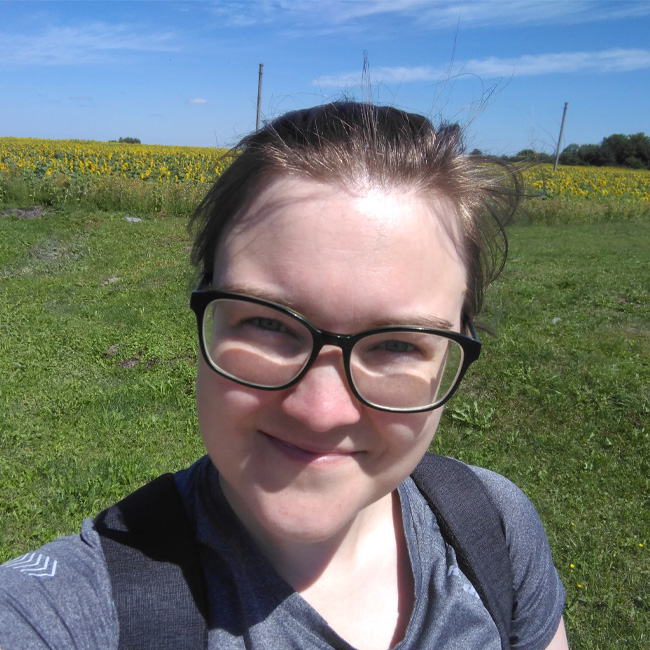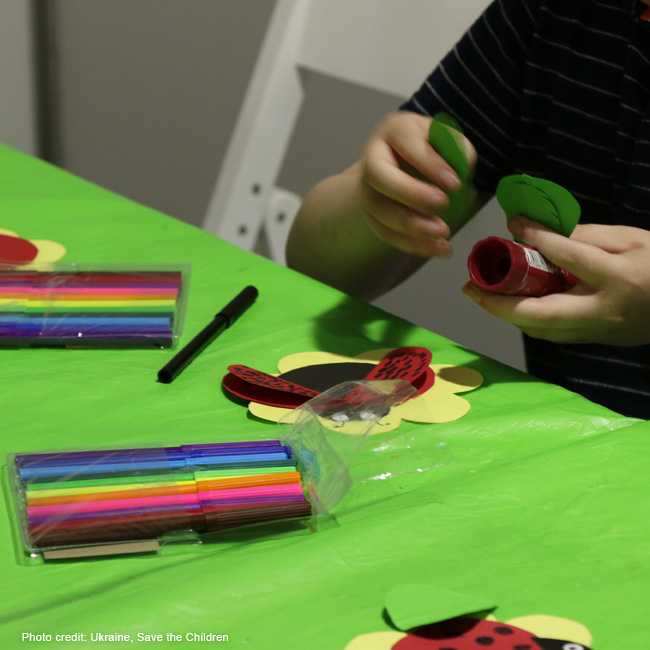ESBE SUPPORTS UNHCR AND SAVE THE CHILDREN SWEDEN
2023-04-04
ESBE has a long tradition of helping others. From a historical perspective, we started helping people at our manufacturing site in 1906. Social responsibility is important to us. And over 110 years later, we have more opportunities to help, and in 2022, we’ve supported families and children - mainly in Ukraine - with the aid we provided to UNHCR and Save the Children Sweden.
On the UNHCR website, you can read about how since the war broke out, over 7.1 million Ukrainian refugees have crossed the borders into their neighbouring countries. And almost as many – 6.9 million people – are on the run within the country. And Save the Children Sweden’s website makes for equally distressing reading. Missile and rocket attacks have destroyed schools, hospitals, and residential areas. Over 5 million children have been displaced and risk being separated from their parents in the chaos. All children in Ukraine, an estimated 7.5 million, are having a very tough time. Thousands of children are being forced into bunkers, and others are dealing with life on the run and all that it entails.
In order to gain a clearer insight into how aid organisations work in Ukraine, we interviewed Karolina Göranzon, humanitarian adviser at Save the Children Sweden.
Hi Karolina! Can you start by telling us a little about yourself?
My name is Karolina Göranzon, I’m 34 years old, and I’ve been working as a humanitarian adviser at Save the Children Sweden for almost three and a half years now.
And when you’re not working, what do you do to relax?
I like to spend time with friends and family. I like to do puzzles or head out into the forest or mountains with a hiking backpack.
In your work as a humanitarian adviser, do you see glimpses of light? What do you turn to to help you see a brighter future?
At an aid agency, sadly you face a lot of terrible things. But I am a positive person by nature. I thrive on improving situations, and I’m surrounded by colleagues who are the same. In one way, I wish my job wasn’t needed. But with the world being as it is, it feels good that there are so many of us working to improve the lives of others. That in itself is a glimpse of light. And it’s heart-warming to hear both children’s and adult’s stories of resilience.
I see from your website that Save the Children has been in Ukraine since 2014. Does that mean that the Ukrainian population know you well?
We have been in the conflict-affected areas of Eastern Ukraine, but since 24 February 2022, we’ve been all over the country. In the eastern regions, we’re well known thanks to our work at schools, but in the rest of the country we’re one of many aid organisations on site, including local ones.

Karolina Göranzon, humanitarian adviser at Save the Children Sweden.
The picture was taken in a field of sunflowers in Ukraine, July 2022.
Does the humanitarian aid in Ukraine differ from that in other countries, or is the need pretty much the same?
Tragically, 200 million of the world’s children live in warzones. They should of course have the same needs met as other children. Save the Children is active in 120 countries, but the needs might vary from country to country and within the same countries. The winter climate for example requires different efforts, and fuel supply becomes essential. In Syria, energy-efficient ovens have been important. But in other countries we might also work on rehabilitating the infrastructure.
Have you been on the ground in Ukraine?
I was on the ground in July 2022. I was working in Kyiv, which at that time was not under attack. Air raid sirens could be heard, but there was no imminent danger. They were extremely intensive days, where my work consisted of applying for funds (grants). I wrote applications, facilitated decision-making, coordinated design of projects with colleagues, and had contacts with the various member branches within the Save the Children movement globally.
Before 24 February 2022, we had about 20 staff from Save the Children on the ground in Ukraine, mainly local workers. It’s a different story today. There are over 200 of us on the ground, and it’s a real mix, as lots of them are on shorter contracts while the recruiting is under way.
How are aid workers received in nations at war? How do you live and how do the different organisations work together?
In the past, we’ve generally been well received and widely accepted. And this is one of our primary methods – to build relationships with the locals in the country in which we’re stationed. Unfortunately the climate has changed over the years, and today, aid workers can instead become targets in conflicts. Safety is therefore of utmost importance, and the humanitarian principles guide both our work and our access. The principles consist of humanity (protecting lives and the health of people wherever they may be), being neutral and being impartial. And we are supposed to work entirely independently with no agenda.
When an aid agency is on the ground in a warzone, the living situation varies, depending on the conditions. You might live in housing, at home (if you’re a local), in a guesthouse, in temporary accommodation, or in tents if the terrain is rugged. Security permitting, and if we’re in a town, we might also stay at a hotel.
Collaboration between agencies is extremely important. There is an entire architectural structure between the different organisations, such as the UN, Save the Children, the Red Cross, and local aid agencies. What are the urgent needs? Where are they needed? The work runs smoothly, and the organisations complement each other well. There is coordination between the organisations.
Companies and private individuals donate money to humanitarian aid – how important are these donations?
All donations are really important! A little goes a long way. The funds are used immediately and divided up according to where the needs are greatest. At Save the Children Sweden, we have a 90 account, and 90% of money donated goes on efforts for children, while the remaining 10% is used for management, planning, marketing, coordination, follow-up, and quality control.
Does Save the Children Sweden receive state funding as well?
Yes, we do. We get support from Sida (Swedish International Development Cooperation Agency) and the EU’s humanitarian division (European Civil Protection and Humanitarian Aid Operations).
How are you using the donations in Ukraine? How are you helping the children there?
We’re repairing schools and setting up temporary places of learning. After the pandemic, the world has learned to have digital meetings, and that’s something we can use and create digital places of learning. Schools are essential to children and give them a sense of normalcy.
And of course we also help with basic needs, like food, water, and heating. In large parts of Ukraine, markets are still working (at the time of writing). So goods are available, but it can be difficult to pay for them. So one of our tasks is to arrange access to cash for families.
What does a day in the life of a Ukrainian child look like? Is it possible to have a functional day-to-day life in times of war?
Seven million children and adults are displaced within the country. They have very few possessions and difficulty with accommodation. They stay with friends, or family, or rent temporary housing. At Save the Children, together with our local partners, we are stationed at local Collective Centres, to help people who are displaced.
We are working on making education available and we arrange catch-up classes. This allows students to catch up on what they might have missed. During a war, people with different skills are displaced, so Ukrainian children are often helped by teachers who are themselves internally displaced. Skills development and the provision of learning materials help create normalcy for both children and adults.

Photo credit: Ukraine, Save the Children
Save the Children is supporting a shelter for internally displaced families in Chernivtsi, Ukraine and has set up a child friendly space. In this space, children can do activities and relax away from the stress of their current situation. Save the Children has recently supplied the space with more stationary, toys and studying materials and is working on establishing a digital learning centre.
Do you encounter many unaccompanied children who have been separated from the parents/families? How can you help these children?
We see unaccompanied children in neighbouring countries. To create a safe environment for them, we work with other organisations on the ground. We put children in touch with Connection Centres and work with national authorities and their systems. For those of us at Save the Children, it’s essential that this coordination is done safely and securely, given the dangers that unaccompanied children face.
Lastly, what would you say is the most important thing to give children forced to live with war? What do the children usually like?
Safety is obviously high up on the list. But otherwise it’s about children being able to feel that they can be children. That they’re given the possibility to play.
Save the Children staff are trained to meet people who have been through difficult events. We’re trained to meet people’s psychosocial needs and to give psychological first aid. This aid is based on five principles: Calmness, Safety, Trust, Belonging and Hope. And to help us, we also have tried-and-tested systems that guide the children to the right source of help, in case we do not offer the services needed.
Thank you for your time, Karolina!
Donate to Save the Children »
Donate to UNHCR »
Related articles
ESBE and corporate social responsibility »
Long-term and sustainable work is found in ESBE's DNA »
ESBE celebrates World Plumbing Day »
ESBE donates money to Save the Children »

Photo credit: Ukraine, Save the Children
Smile UA, is a Save the Children Partner organisation based in Ukraine. Smile UA run many child friendly spaces for displaced children with a wide range of activities and events for all ages. These activities are designed to give children a safe space to relax and play. The spaces are supported by psychologists and facilitators who ensure the program of activities support children’s mental health.




















